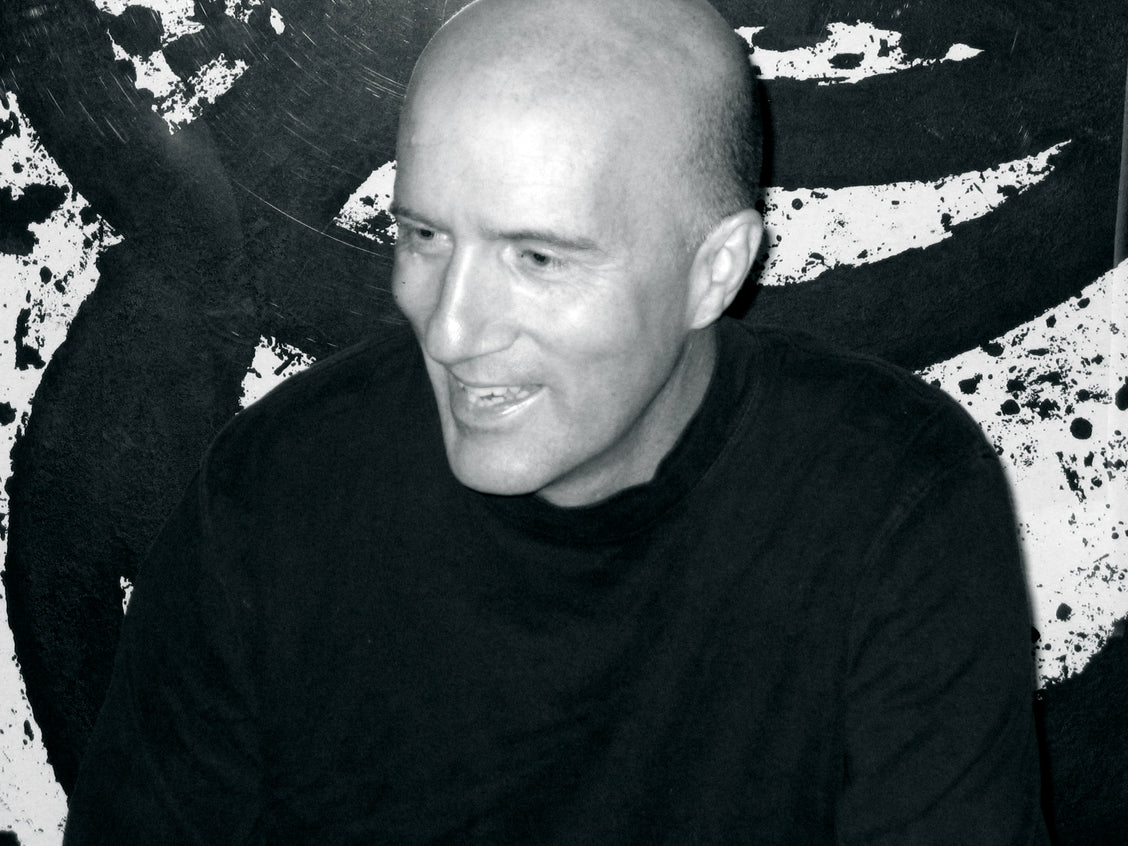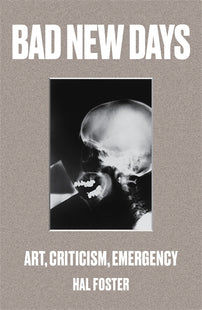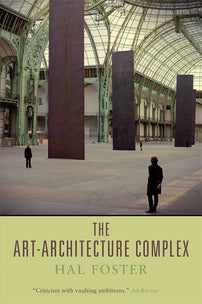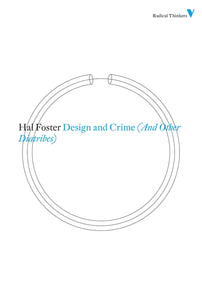Tragedy and Farce: Interview with Hal Foster
Hal Foster interviewed by Andreas Petrossiants about his new book, What Comes After Farce?

Hal Foster’s new book What Comes After Farce surveys decades of art history and theory in three thematic sections: “Terror and Transgression,” “Plutocracy and Display,” and “Media and Fiction.” In one essay, “Exhibitionists,” Foster cites Robert Smithson’s remark, key for the historicization of the first wave of institutional critique, that the task of artists is to demonstrate the apparatuses they are “threaded through.” Today, acknowledging the widespread lack of cultural funding and the precariousness of cultural producers generally speaking, not to mention the already long-ago understanding of radical art’s recuperability, Foster proceeds to speculate on the (im)possibilities of critique, when, as he allows, many artists and exhibition makers are happy to be threaded. With each section, though, he concludes by returning to utopian premises embedded in fiction.
This interview was conducted during the last weeks of spring 2020, when the Covid-19 pandemic was slightly more novel. Then and now, many threads in the book seemed especially in relief while in collective reclusion. The same “Exhibitionists,” for example, concludes with a provocation to the certain players in the globalized art world: “All this flying around, inventing rules, and reformatting might be a protest against forgetting; it might also be a fast track to oblivion.” After some months, as museums and universities the world over re-open only to probably close again as the winter lockdowns loom on the horizon, oblivion seems more likely.
In April, Foster and I spoke over email discussing how his book documents the imagistic and mediatic conditions of the contemporary “farce,” quoting Marx’s famous quip about the repetition of tragedy. Marx, of course, was referring to one historical repetition: after the counterrevolutionary violence following the first French revolution, Napoleon seized power; after the second revolution in 1848 his nephew won the presidential election. But neither the story nor history end there. After the brutal murder of thousands of communards in 1871, reactionaries again came to power; five decades later, after the Russian revolution, “the Bolsheviks would survive the reaction by becoming the counterrevolution themselves,” as they murdered anarchists and other revolutionaries, per Crimethinc. In other words, tragedy and farce repeat themselves. The title of Foster’s book, then, if taken as a question, what might come after farce is a necessary one. The below is an edited conversation from our email exchange.
—Andreas Petrossiants, October 2020
Andreas Petrossiants (AP): Some years ago, you said: “To sustain a practice you have to develop a language and that language demands an engagement with the past.”[1] To begin, can you introduce the post-2016 moment, and the “farce” that follows past tragedies of neoliberalism?
Hal Foster (HF): The book starts before the 2016 election with reflections on the aftermath of 9/11, in particular on a collective turn to a “traumatophilic” understanding of art and history that began then—a looking for intense affect in all things. It was also after 9/11, of course, that a state of emergency became more the norm than the exception, at least in the US, and it continued to be so, first discreetly under Obama and then blatantly under Trump. But, as you say, the farce in question has to do mostly with life after the 2016 election. My title evokes the first lines of The Eighteenth Brumaire of Louis Bonaparte where Marx famously declares, “Hegel remarks somewhere that all great world-historic facts and personages appear, so to speak, twice. He forgot to add: the first time as tragedy, the second time as farce.” Marx had in mind the power grab first of Napoleon and then of his nephew Napoleon III. I offer an update for the neoliberal age. With Reagan we experienced the tragic period of neoliberalism—its cruel attack on the social contract—and now with Trump we see its farcical version, which reveals its true nihilistic character. Reagan and company aimed to cover the brutalities of neoliberal deregulation with the banner of “family values,” a call to traditional morality. As Wendy Brown has argued, Trump and crew have ditched that ideological disguise; now it’s nihilism, openly and all the way down. Our plutocratic overlords regard the trashing of constitutional laws, the scapegoating of immigrants, and the mobilizing of white supremacists as a small price to pay for even more capital concentration through financial profiteering, tax cuts, and crisis bailouts. As they get gated, so many others get gutted.
AP: Speaking of the birth of neoliberalism just before and especially during the Reagan years, and its more developed variants today, I think back to your The Return of the Real (1996),[2] which you began with a two-part question: “What produces a present as different, and how does a present focus a past in turn?” There, you set out to formulate a coherence of the historical avant-garde and refute arguments that the “neo-avant-garde” was a repetition without specificity or “authenticity.” With What Comes After Farce? you insist that this coherence is no longer self-evident, that new models of art historical time are necessary. Can you briefly elaborate on these different models?
HF: However bathetic, the pattern of tragedy followed by farce is still a historical narrative. Yet, what can come after farce? Nothing necessarily. Nothing is guaranteed; everything’s a struggle. That’s true in art as well. It’s doubtful whether art can depend on its past anymore, and its present is institutionally tenuous too, all the more so with the pandemic. Part of my initial attraction to modernist art was that it seemed to keep alive a dialectic of history after its revolutionary arc ran into the sand with Stalinism. And part of my initial attraction to art history was that it seemed to provide a special insight not only into sociopolitical events but into the very structure of history. That’s why, in The Return of the Real, I developed the notion of “the deferred action” as a way to think the relation of the postwar avant-gardes to prewar precedents, as well as the idea of a “parallactic” view of history as a way to frame a present in tandem with the past. The former proposal isn’t so salient anymore, but I still hold to the latter. At the same time, like many others, I have become more alert to the play of anachronism—or, better, nonsynchrony—in art in particular and culture at large, and more aware of the way in which, especially from a global perspective, the contemporary is, as its etymology suggests, a time of multiple temporality, often in tension with one another. New models of times along these lines are necessary, and some are already on offer.
AP: And here, as with your book Bad New Days (2017), you return to aesthetic theory. Now that it’s been almost four decades since you edited The Anti-Aesthetic, I’m curious what you would say about humanism/anti-humanism, or the aesthetic/anti-aesthetic. I don’t think either of us are interested in retooling Kantian judgement, but I am interested in what you think an aesthetic theory should look like today. Furthermore, in What Comes After Farce?, you describe emergent, Left political momentum, perhaps even a growing political consciousness, following from Occupy, Black Lives Matter, and the #metoo movement, while also asking whether the museum can still be a space of refuge for critique. I’m reminded of how the decolonial movement and autonomous formation Decolonize This Place views the museum: as a safe space (with less police presence than in the street, say) that can be used as a stage from which to build struggle. How would you characterize the political agency, if any, granted by the museum today?
HF: If we take the long view, the modern version of the art museum arose in the early 19th century as part of a bourgeois public sphere, a new entity that was part actual and part ideal, where different people (though not so different—mostly men of mostly one class) could come together, look at official work, and discuss its merits. That was the idea anyway; it was never realized fully, and even as its franchise was sometimes extended, it was also eventually undermined in all kinds of other ways. Nevertheless, I hold to the promise implied in the initial proposal—the promise of both the semi-autonomy of aesthetic experience and the critical potential of group debate. A good instance (alas, it’s a fictional one) occurs in The Aesthetics of Resistance (1975) by Peter Weiss. There, Weiss writes of a group of young Communists, who, in the early Nazi years, teach each other about empire—from scratch, with no advance knowledge—in front of the Hellenistic Pergamon altar in the museum of that name in Berlin. In effect, they carve out a micro proletarian public sphere out of the macro bourgeois one.
Lately, as you suggest, we have seen a partial recharging of the museum, largely as knock-on effect of different movements like Occupy, Black Lives Matter, and #metoo, an unexpected return of the museum as a possible site of a reclaimed public sphere, where, at least in principle, critiques can be voiced and alternatives proposed. There are similar ripples through the university as well. Again, it’s very partial, it’s not given, it has to be insisted on again and again. But the museum has emerged once more as a pressure point for activist groups like Decolonize This Place that aim to open up the contradictions between its public commitments and its private interests, and in these cracks to make a space—however small—for change.
AP: Certainly. I’ve been particularly enlivened by the participation of so many different contingents in recent fights that took the museum (or university for that matter) as a stage: coalitions, organizations, affinity groups fighting against prisons, cops, gentrification, and colonialist occupation, all organizing together. On this note, following from the last question, you also write: “At the same time, we should not let bad actors get a free pass where they should be most held to account–in the political realm. The task is to demand it there as well, above all.” How do you differentiate between the political and museological realms, when that line is indeterminate at best?
HF: I don’t have to—they come to us differentiated. Yet they’re also connected, and we have to think both things at once. In my view it’s an advantage to do so—both art and politics are better for it. There’s also a pragmatic dimension to this semi-autonomous, semi-imbricated relationship: the cultural realm—museums, universities, and the like—is where many of us can exert what little political leverage we possess. Of course, many young activists view as the museum as hopeless: rather than critique it, they say, just leave it for dead. There’s a related take on the university: don’t bother to reform it, just exploit it as an undercommons. But I’m not so defeatist or cynical. If Trumpism has taught us anything, it’s that institutions are very difficult to build and relatively easy to destroy, but also somewhat amenable to detourning. Also, I’m often impressed by what has happened in some museums during this difficult period—not only new programs initiated from above but also critical conversations begun from below (I overhear the most intense arguments in galleries). The museum isn’t just an expanded living-room of the super-rich or a DIY studio for distracted selfies. I agree with Kerry James Marshall, whose work I discuss in the book, about the necessity of critical participation.
Your description of the museum as “a space for refuge for critique” gives me pause, though, and not only on the familiar grounds that critique is often accommodated there—“recuperated” (as we used to say) as another museum category. This is how many young artists now view “institution critique”—as another museum category—but that strikes me as premature, almost preemptive, and I have a different problem in mind here anyway. Remember how, once it seemed that we could no longer interact very effectively at work, school, or home, we thought we might to do so in museums and galleries, that is, we might practice “relational aesthetics” there? Well, just as the social was once outsourced in part to the cultural, so now the ethical is also in part relocated there. That is, as codes of conduct were trashed in profession after profession, it became incumbent on cultural institutions to insist on them all the more, to be exemplary in this respect. The problem is not simply that this vigilance can take on a minatory cast (which is conveyed brilliantly by Zadie Smith in her story “Now More than Ever”); it is that these institutions are then treated as compensatory, and assholes are allowed to get away with murder in other realms—in politics and in business especially.
AP: The “post-critical” condition that you reference, the futility of critiquing or reforming the museum speaks to a wider condition of hopelessness for extra-parliamentary politics. I’ve become very interested in conspiracy theories lately, particularly how the belief in them indicates the hope for (political) agency. A recent book by Erica Lagalisse, Occult Features of Anarchism: With Attention to the Conspiracy of Kings and the Conspiracy of the Peoples, for example, traces the connections between occult spiritualties, secret societies, and anarchism (as well as proto-anarchic Enlightenment tendencies). I was struck by a note in your book: “the proclivity for conspiracy theories can be understood as a symptom of an incapacity to think through or believe in other kinds of agency.” I wonder, however, whether the opposite can also be true, that the will to believe in them demonstrates the will for performing agency, but not the means to direct it. Meaning the phrase: “global hegemony is comprised by an elite group of lizards and violent plutocrats,” for example can become a valid anti-capitalist critique if we omit the lizard part.
HF: I don’t disagree. Remember that for Freud the conspiracy theory of the paranoiac is a fervid attempt at the reconstruction of a world that has fallen apart. There is truth there—the world has fallen apart—and perhaps agency too—let’s rescue it somehow. But often the response is so desperate that this agency is soon undercut. My favorite definition of the paranoiac, by way of Philip K. Dick, is the person with all the facts. Knowledge can make you free, as they say, but too much can make you crazy—it can paralyze agency. And then there’s this problem, which I outline in the book: like other strategies once claimed by the Left such as transgression, conspiracy is now dominated by the Right. In a way we’re back where we were in the early 1960s when the historian Richard Hofstadter, alarmed by Barry Goldwater, wrote his great essay on “the paranoid style in American politics.” For Hofstadter this mentality was animated by “conspiratorial fantasy”—the suspicion that there is always a diabolical enemy out there (Communists, Jews, Black Panthers, feminists, the deep state, etc.). Further, Hofstadter thought that this fear of political subterfuge stemmed from a feeling of sociopolitical dispossession, one that these “sufferers of history” overcame with a compensatory sense of spiritual empowerment: they alone see the truth. This is the tension that produces the apocalyptic tenor of paranoid politics, which boils down to the promise of redemption for them and the threat of damnation for everyone else. “The paranoid is a militant leader,” Hofstadter concluded, with “the will to fight things out to a finish.” It feels like this mentality is back with a vengeance.
[book-strip index="1" style="display"]AP: Totally agreed. You finish an essay on the work of Hito Steyerl with a series of questions by Derrida imploring fellow philosophers to avoid “the apocalyptic tone.” Revising them slightly—and I agree the questions are still relevant, if better suited for others: Extinction Rebellion, for example, or similar liberal-leaning formations that evacuate class struggle, anti-colonial resistance, questions of structural dispossession—you write: “Why this apocalyptic tone from critics on the Left when we are surrounded by hell-fire politicians on the Right?” What, then, do you think are more relevant postures of critique, and how to temper apocalyptic tones when different apocalypses have already happened (colonialism and ethnic cleansing) and continue to occur on different scales all the time?
HF: I’ve touched on this tone above. Just as there’s a paradoxical attraction to the traumatic, there’s also a strange seduction to the apocalyptic; I suppose it counts as our version of the sublime. But why mirror the “paranoid libertarianism” of the Right with a Left version? Such convergences are often disastrous. And yet the situation is obviously dire. Most of us look out on a world that has moved, not only politically but also technologically, beyond our control. And this extreme situation has prompted extreme formulations by artists and critics, some of whom I consider in the book. Thus, for example, Trevor Paglen sees art as a “safe house in the invisible digital sphere,” while Claire Fontaine imagines it as a “human strike” against all scripted identities, even as Hito Steyerl declares that, since subjectivity is colonized by capitalism, we might as well identify with objects. Often in this harsh light it is difficult to distinguish between the critical and the dystopian. Sometimes, too, the ambient nihilism of the neoliberal order seems redoubled as much as challenged.
AP: You allude to the histories of commodity and ideology-critique, and you seem to leave open the question of whether they can still be adequate forms for “tracking” or “challenging” the reign of the image, not to mention the surveillance, policing, and control apparatuses that make use of them. Most interventions into algorithms, as you say, only serve to make the algorithm smarter—as with the recuperation of resistance or critique you alluded to. You propose fiction as a way to find the real today. Can you elaborate on this?
HF: However grim the book is at times, each of its three sections concludes with practices that offer a “utopian glimmer of fiction” (a phrase I borrow from Ben Lerner). Thus, at one point, I discuss how Paul Chan champions the cunning of Odysseus, which he opposes to the conning that prevails in the art world. Odysseus “survives and endures by the grace of what he knows and what he is capable of imagining and creating,” Chan writes, contra Adorno and Horkheimer. “Like an artist.” At another point I take up Kerry James Marshall, for whom “black pathology” is overplayed in the dominant culture. “There are things that I don’t do,” he says matter-of-factly. “You don’t see images of black people in trauma in my work; you don’t see images of black people who are abject in my work.” Instead Marshall presents scenes evocative of relief, joy, even salvation. Finally, the book ends with a chapter titled “Real Fictions” that traces an epistemological shift across recent art and fiction—a shift from deconstructions of representations of the real to reconstructions of the real via representations. One aspect of this turn is the use of artifice to rehabilitate the documentary mode, which was long critiqued as “an inadequate descriptive system” (to quote Martha Rosler)—to rehabilitate it as a semi-adequate critical system. Roughly speaking, this is the posture of Harun Farocki, Hito Steyerl, Trevor Paglen, as well as of Eyal Weizman and Forensic Architecture, all of whom I discuss. Such forensic practices salvage, assemble, and sequence fragmentary representations in order both to image and to narrate disputed events; these scripts can then be offered as evidence in courts of opinion—and sometimes in courts of law as well (Weizman reminds us that forensis is Latin for “pertaining to the forum”). At first glance this turn might be interpreted as neo-Brechtian or neo-Barthesian—as ideology critique or deconstruction come once more—but, again, the relevant work is concerned less to expose a given reality behind representation than to reconstruct an occluded reality, or to point to an absented one, by means of representation. (I see this recalibration in play in fiction, too, with such writers as Tom McCarthy and Ben Lerner.) If my book doesn’t end on a utopian high note, it also doesn’t conclude with the usual sigh of Left-wing melancholy.
Andreas Petrossiants is a writer and editor living in NY. His work has appeared in e-flux journal, Artforum, Bookforum, The Brooklyn Rail, Hyperallergic, Blind Field, View. Theories and Practices of Visual Culture, Strelka Mag, Exhibition Reviews Annual, and elsewhere. He is the associate editor of e-flux journal.
[book-strip index="2" style="display"][1] Hal Foster in interview with John Douglas Miller, “After the Canon? An Interview with Hal Foster,” Mute, November 23, 2015, https://www.metamute.org/editorial/articles/after-canon-interview-hal-foster.
[2] Hal Foster, The Return of the Real (Cambridge, MA: 1996).




